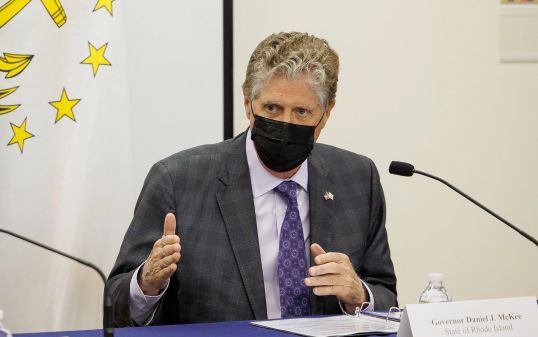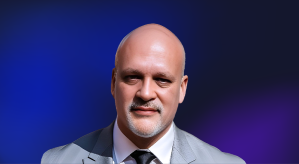Creators of the new and open-source VoteSecure say mobile voting is finally ready

“Electronics does not magically restore juice to tired democracies.” This was according to the seemingly annoyed author of a letter to the editor of The New York Times, in 1992. He was responding to a proposal by Ross Perot, who that year had announced he would run for president as an independent, and who had proposed as part of his campaign the concept of an “electronic town hall,” in which computer-linked televisions would, (though it was never exactly explained how), enable instantaneous voting from the comfort of couches across America.
Like Perot’s political career soon after, that retro-futuristic version of the idea dissipated, but its essence has remained, as have debates over the viability of using computers to vote. But when internet voting’s contemporary booster, the political-strategist-turned-venture-capitalist Bradley Tusk, this week announced that a new, secure mobile-voting technology he has funded could save democracy, he wasn’t only echoing voices from decades past, but his own from several years ago, and again several years before that.
Tusk, who ran campaigns that helped Uber overcome an established and politically powerful taxi industry, (and earned a reported $100 million from the stock he received from the company for his work), has tried numerous times in recent years to jumpstart internet voting, in West Virginia, the Seattle area, Hawaii, Denver and other places. Sometimes he’s helped to modestly increase voter turnout, or at least collected enough new information from his experiments to try yet another one. But this time, he said, it’s different, because the technological hurdle that had been hampering past efforts has been cleared.
On Friday, Tusk’s Mobile Voting Foundation, together with the election tech firm Free & Fair, announced an open-source software development kit that, its creators claim, can be used to develop smartphone apps that allow fully secure and verifiable online elections that can also withstand the inevitable digital pummelings doled out by those who revel in disrupting services when they can not breach them.
“The tech that existed wasn’t good enough to do it, and the companies doing it, even if they did invest the resources to make it good enough, were never going to make it open source because they didn’t want to spend all this money and then give away their proprietary technology to their competitors, which meant it either had to be done by the government, which wasn’t doing it, or philanthropically,” said Tusk, who also served as deputy governor of Illinois and campaign manager for former New York Mayor Mike Bloomberg. “So that’s when we decided to do it.”
The project, which is called VoteSecure, is on Github, free to be vetted and used by those who understand terms like “homomorphic tallying” and “Benaloh challenges.” It’s designed to be used exclusively for apps on smartphones. It’s accompanied by what its developers claim is the “most comprehensive threat model for elections ever created,” but the crown jewel is the security protocol, “the hardest, most interesting chewy thing at the middle” of any voting app, said Joe Kiniry, Free & Fair’s founder and chief executive.
“We’ve carried all the really hard eff’n water so that they don’t have to, because the average election company has never employed a cryptographer ever,” said Kiniry, who over the last 16 months has led a small team of “world-class” cryptographers in applying the same practices he employs when developing software to be used by the Department of Defense, his day job at the technology and engineering firm Galois. “I’ve always thought of democracy as a critical system, just like our water and our power and our nuclear, etc. And so we use the same tools and techniques to tackle problems in elections as we do in my national security work.”
E2E-VIV
A company called Democracy Live is planning to use the new technology in its software for a 2026 election in Anchorage, Alaska, that will decide six city assembly seats and two school board seats. The New York Times reported Thursday that the city, home to about 240,000 registered voters, will still allow mail-in and in-person voting, but that administrators were keen to find ways to ease the task of voting for the transient populations of military personnel, oil and gas workers and fishermen who are often challenged by foul weather and long drives across the rural expanses of the nation’s largest state. Tusk said Adams County, Colorado, home to about 340,000 registered voters, will also soon use a Democracy Live app that contains VoteSecure. Another elections software firm, called Sequent, is likewise planning next year to integrate the protocol.
Tusk and Kiniry and their team of cryptographers are proud of what they’ve created. The math and computer code they developed purportedly solves a series of technical challenges that Kiniry and others had laid out years before, to establish what’s called end-to-end verifiable internet voting. The specification holds that voters must be able to see that the choices on their encrypted ballots match their actual choices. Voters must be able to see that their ballots appear on the public record. It must be possible for anyone to verify that all posted ballots were tallied accurately. It must not be possible for results to be changed without someone detecting that a change had taken place. And how people vote, of course, must remain private.
“Ten years ago, there was a group of kind-of ultra-high-end misfits who all disagreed with each other about how internet voting might come to pass,” Kiniry said. “And we got them all to get together to write a book that basically explains if we’re going to do internet voting someday. Here’s the high bar we have to jump over, here’s all the properties you have to have in an election. I was an optimist at the time, but I knew how hard it was.”
Kiniry anticipated that VoteSecure will generate, as his past elections projects have, investigations and research papers by those who want to know if it’s as secure and capable as advertised. But neither he nor Tusk will need to wait for research papers to get early peer reviews. For many election-security experts, internet voting is a nonstarter. It simply does not matter how good the cryptography is, said Andrew Appel, a computer science professor at Princeton University.
“Voting by internet is not securable by any known technology and that’s not likely to change any time soon,” Appel said. “The problem with internet voting is whoever gets to install the software in that server decides how the ballots are handled. And so if somebody hacks either the central server, running in the cloud somewhere, or if somebody hacks the county’s computer where they download the ballot information or if somebody hacks the voter’s computer… Regular voting on paper isn’t perfect, but you can’t arbitrarily hack huge numbers of votes remotely with one install with paper voting. There’s witnesses to every part of it.”
Internet voting technology has undoubtedly advanced, though. Voatz, an earlier Tusk-funded app that encoded votes on a blockchain, was shown in a 2020 audit, endorsed by Tusk and conducted by the cybersecurity firm Trail of Bits, to contain more than a dozen severe security vulnerabilities. On the issue of blockchain, which Kiniry dismissed as “nonsense,” he’s at least achieved confluence with his peers. In a recent 50-page paper on internet voting, authored by Appel, a section dedicated to the technology contains just a single sentence: “There’s no insecurity of internet voting that blockchain does not make worse.” It’s the question posed by that paper’s title — “Is Internet Voting Trustworthy?” — where the two experts likely diverge.
“You can look at the code all you want,” Appel said. “How do you know that’s the code that’s installed in the computers running the election?”
Finding a movement
Tusk’s strategy is to prove his new technology, which he said has so far cost about $20 million to develop, in successively larger and higher-stakes elections. He has “no interest” in rushing forward VoteSecure for the 2028 presidential election. He’ll start with school boards and city councils, “see how it goes,” begin scouting out state elections and “maybe in a decade we’re doing federal elections.”
His team knows the technology won’t matter if they can’t first win hearts and minds. After the elections in Alaska and Colorado, Tusk said he plans to begin lobbying a half-dozen states, hopefully riding a cultural wave as the technology catches on. To reach the public, the team booked interviews with news outlets, like The New York Times and this publication, but also with a high-school reporter who writes for a national service. Tusk said he hired a digital marketer who works for the YouTuber Mr. Beast, with the aim of promoting among Gen Z the allure of engaging directly with the political process through their smartphones, arguably the symbol of that generation.
“No matter how good the product that these guys built is — and I think it’s exceptional — if we can’t build a massive national grassroots movement to demand this, we’re going to fail,” Tusk said. “That’s who I need. I need my 16-year-old son, I need my 19-year-old daughter. I’ve got to build a grassroots effort among them and that’s how we win.”
But he’ll also need the support of election officials, who aren’t so easily swayed, though some already seem receptive. Liz Edwards, Anchorage’s election administrator, explained in an email that her office “wanted to offer different methods to make voting more accessible, especially for our military and overseas voters,” a reference not to VoteSecure, but an online portal used in its regular election last April. She said voters “appreciated an easier way to vote while they travel, and that they especially liked not having to print or scan physical documents.”
In New Mexico, transitioning away from 100% paper balloting, widely considered a salutary practice, would be “a big lift,” said Alex Curtas, director of communications for Maggie Toulouse Oliver, New Mexico’s secretary of state, but “definitely an interesting idea.”
“We’re not necessarily in the ‘never’ camp,” Curtas wrote in an email. “But, at least, we would have to see its efficacy and security demonstrated in real-world scenarios and then we would have to undertake a rigorous research process on our own. And then any big change to the voting process like this would likely have to be passed by our legislature and signed into law before it could ever be put into practice.”
Even the author of the 1992 letter to the Times editor was open to the idea of a more digital democracy — his main critique was that Perot’s concept was “fuzzy” and perhaps required the academic rigor he would soon provide. The author was Jeffrey Abramson, a political science professor, then at Brandeis University, who several months later wrote a paper imagining just what would comprise a viable “electronic town hall.” Done correctly, he imagined, it might “galvanize citizens back into the habits of participation,” and he outlined a real-world test to take place the following year.
Tusk’s project is likewise rooted in a despair over the majority of the public’s detachment from much of the democratic process, particularly the primary elections — “the people who usually vote in the elections that matter the most are on the extremes: the far right, the far left or different special interests who can move money” — and the chaos and nihilism that President Donald Trump has watchfully encouraged in his second term, as he’s repeated countless times, falsely, that the 2020 election was rigged against him.
“If we just keep going at this pace of polarization and extremism, we’re not going to be a country, in my view, in 20, 25 years,” Tusk said. “So unless you just want to throw in the towel on the entire American experiment, you’ve got to do something different. Because the way we’re doing it now simply doesn’t work.”
Slippery slope
As far as stakes go, they don’t get much lower than the King Conservation District in Washington state. But since switching to online ballots in 2020, that district has enjoyed “a steady increase and maintained significantly higher-than-average voter turnout,” Mark Dostal, the district’s engagement program manager, wrote in an email. Statistics he shared confirmed his characterization, though not many people vote in conservation district elections. Of the approximately 1.2 million people eligible to vote in King County’s, only about 11,000 did so in 2024. Still, it’s more than the 144 voters in 2015, or the six voters who turned out in 2018.
Appel, the Princeton professor, was unimpressed by this result, though he said he understands why people find internet voting an attractive proposition. As illustrated by DoorDash, Netflix, Uber, or any number of other industry-killing apps, using a phone to summon the moment’s desideratum is usually a more convenient option than going to a restaurant, finding a video-rental store or hailing a cab, particularly for those with disabilities. Some of Tusk’s early pilot projects did not extend internet voting to entire populations, but only to select groups, like people with disabilities or overseas military personnel.
“One might ask, but suppose we limit internet voting to a smallish class of voters, such as those abroad or those with disabilities?” Appel wrote in his 2023 paper. “Are we saying that it’s all right if only their thousands of votes are stolen? And there is a slippery slope: once internet voting is normalized for one class of voters, other classes will demand it.”
But Tusk, for his part, isn’t only aware of this slippery slope — he’s counting on it.
“My experience in tech is once the genie’s out of the bottle, it doesn’t go back in,” he said. “Once people see there’s a better way to do something, they don’t ask to go back to the less-convenient, more-difficult approach. We just got to get it out wherever we can.”






